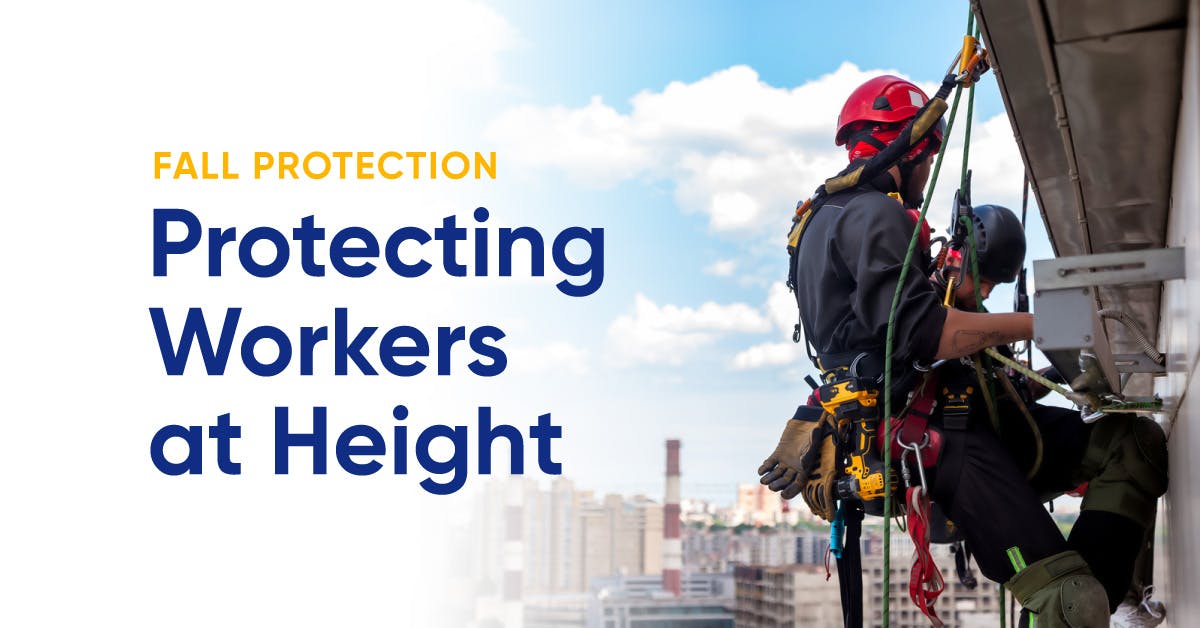The construction industry contributes massively to any country's economic growth. As per the survey, the construction industry contributes 4.10% of the US GDP annually. Construction sites involve dangerous activities, heavy machinery, and many workers; therefore, construction site safety is crucial. Falls are the leading cause of injuries sustained by workers at a construction site, mainly falls from ladders. In the construction business, ladder falls cause an estimated 24,882 injuries and 36 fatalities per year. OSHA knows that accidents involving falls are usually complicated occurrences involving several variables. Therefore, the fall protection standard came into being, which addresses both the human and equipment protection issues for workers' fall risks.
OSHA states a fall injury is “anything at a worksite that could cause a worker to lose his balance or bodily support and result in a fall.” There are multiple causes such as:
-
Wooden Guardrails: Damaged or missing guardrails, in particular, toe boards that are improperly or never installed, can consequently result in fatal fall injuries.
-
Scaffolding: not locking the wheels of a moving structure.
-
Personal fall arrest systems are not present.
-
Fall protection that doesn't adhere to the standards for weight bearing.
-
Unguarded edges of the roof fall through openings, such as unfinished portions of the top and skylights, and along the roof's unfinished leading edge.
-
Aerial lifts are frequently carried out on rocky terrain. Because of the shaky ground, the charge may tilt, swing, or tip, thus resulting in a fall.
-
Construction sites tend to become cluttered with tools, machines, and workers, thus resulting in multiple slips and trip injuries.

SUB-PART M:
Subpart M of the fall protection standards concerns the criteria, laws, and regulations for fall protection at construction sites. It is applicable when workers are working at the height of 6 ft above the ground level, rotation from falling through holes and falling objects, and safety against hazardous equipment and machinery without regard to the height. However, it is not implemented to employees examining, researching, or evaluating working conditions either before the commencement of the work itself or after all construction has been finished.
What are the Criteria to Imply Fall Protection?
Employers must first evaluate the workplace to see if the walking or working surfaces are strong and structurally sound enough to support workers safely. Next, the employer must assess whether fall protection is necessary once it has been determined that the work surfaces can safely sustain the required job activity.
Employers are subjected to applying fall protection standards by OSHA when they have workers working at 6 ft above the ground level and less than 6 ft when working with dangerous equipment. Fall protection standards also apply when a worker is involved in the following tasks:
-
Workers performing bricklaying and related work 6 feet above ground level.
-
Workers operating on a low-slope roof of 4 x 12 or less (vertical to horizontal)
-
When working on a steep roof with one or more unprotected sides or edges 6 feet or above lower levels.
In general, guardrail systems, safety net systems, or personal fall arrest devices can be used to provide fall protection. OSHA refers to these techniques as traditional fall protection techniques.
Conventional Fall Protection Systems:
Guardrail Systems:
Barriers called guardrail systems are built to prevent fall injuries. An employer must meet the following criteria for the instalment of the guardrail system:
-
Top rails, or comparable guardrail system members, must be 42 inches, plus or minus 3 inches, above the working or walking level.
-
When no walls or parapet walls (at least 21 inches) are high, screens, mid rails, mesh, intermediate vertical members, or correspondent intermediate structural structure must be provided between the top corner of the guardrail system and the walking area
-
When screens and mesh are utilized, they must cover the space between the top rail supports, from the top rail to the walking surface.
-
Gates must be used if guardrail systems are placed around openings that serve as access points (such as ladderways). The access point needs to be shifted to stop workers from unintentionally walking into the hole directly.
Safety Net Systems:
When safety nets are utilized, they must be positioned as close as possible beneath the walking or working surface that employees are using and no deeper than 30 feet below that level. The space between from the working surface to the net must be clear when nets are deployed on bridges. The employer or a selected competent person shall certify that the net and its installation conform with the standard unless the employer can show that performing a drop-test is unreasonable.
Personal Fall Arrest Systems:
A personal fall arrest system is a safety gear to halt a worker who is falling from a working level.
It consists of an anchorage, connectors, and a body harness. Under Subpart M, body belts (safety belts) are prohibited for use as part of a personal fall arrest system. The maximum arresting force on a worker should be 1,800 pounds when used with a body harness. The system should be firm so that a worker can neither free fall more than 6 feet.
|
The vertical distance from a working level to the transverse plane of the net |
Horizontal distance from the corner of working space to the outer corner of the net |
|
Up to 5 feet |
8 ft. |
|
More than 5 ft./ upto 10 ft. |
10 ft. |
|
More than 10 ft. |
13 ft. |
In conclusion, employers and employees must be vigilant about the fall protection standards in order to prevent fall injuries and fatalities. Accidents may seem inevitable at construction sites; however, complying with OSHA’s fall prevention standards may help reduce it since falls make up for most of the construction site injuries.

